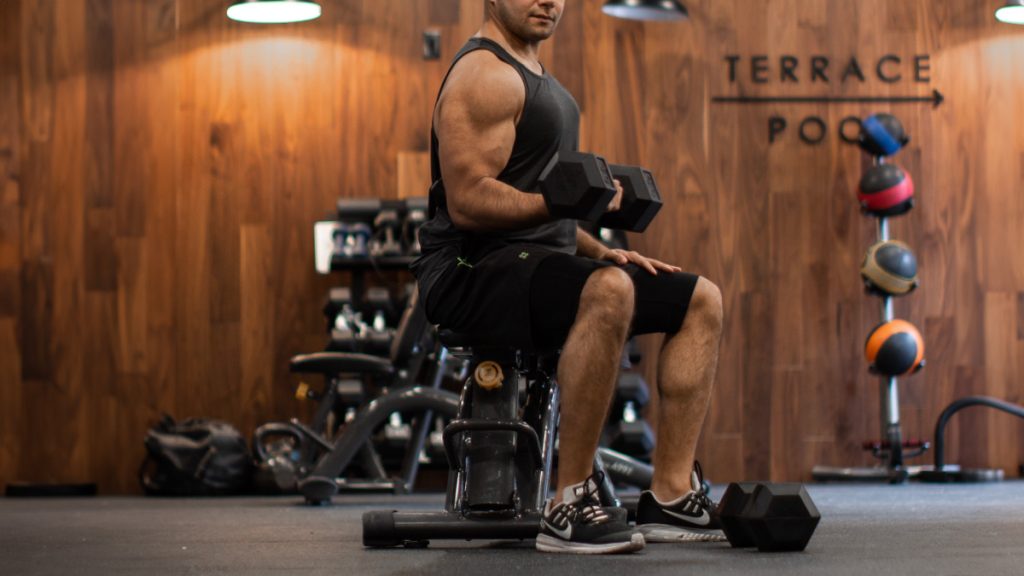Creating a home gym can be one of the most convenient and effective ways to stay fit. It eliminates the need for gym commutes, provides privacy, and lets you work out on your own schedule. Whether you’re aiming to improve your strength, build endurance, or increase flexibility, setting up a personalized fitness space allows you to achieve your goals without leaving your home. In this ultimate guide, we’ll walk you through the steps to build a home gym tailored to your fitness needs, space, and budget. Building your home gym is an investment in your health and fitness journey. By starting with the basics and customizing your space to fit your goals and budget, you’ll create an environment that encourages consistency and progress. Whether you’re lifting weights, practicing yoga, or doing cardio, a home gym empowers you to work out on your terms, all while saving time and money. So start small, stay motivated, and enjoy the convenience of achieving your fitness goals right at home.
1. Define Your Fitness Goals
Before you start purchasing equipment, it’s essential to outline your fitness objectives. Are you focusing on strength training, cardio, or a combination of both? Your goals will dictate the type of equipment you’ll need.
- For Strength Training: Consider weights, resistance bands, and strength machines.
- For Cardio: Look at treadmills, stationary bikes, or jump ropes.
- For Flexibility: Focus on yoga mats, foam rollers, and stretching aids.
Tip: Prioritize multi-functional equipment if you have limited space or budget.
2. Evaluate Your Space
Take a realistic look at the available space in your home. Your gym doesn’t have to occupy an entire room—it can fit into a spare bedroom, basement corner, or even a garage. Measure the area and ensure there’s enough room for your equipment and movements.
- Small Spaces: Opt for foldable or compact equipment like resistance bands, adjustable dumbbells, or a compact rowing machine.
- Large Spaces: You can accommodate more extensive machines like treadmills, squat racks, or cable machines.
Pro Tip: Keep ceilings in mind, especially for exercises like jumping or using pull-up bars.

3. Create a Budget
Setting a budget ensures that you spend wisely without compromising quality. While it’s tempting to splurge on high-end equipment, you can create a functional gym on a smaller budget by focusing on essentials.
- Low Budget: Start with basic equipment like a yoga mat, dumbbells, resistance bands, and a jump rope.
- Moderate Budget: Invest in a bench, adjustable weights, and a stationary bike.
- High Budget: Include machines like a treadmill, rowing machine, or a full multi-gym setup.
Tip: Check for sales, used equipment, or gym clearance events to save money.
4. Essential Equipment for Your Home Gym
Every home gym should have foundational pieces of equipment. Below are suggestions based on fitness categories:
- Cardio: Treadmill, elliptical, spin bike, jump rope, or rowing machine.
- Strength Training: Dumbbells, kettlebells, resistance bands, barbells, squat rack, and a bench.
- Flexibility & Recovery: Yoga mat, foam roller, stability ball, and stretching straps.
Must-Have Multipurpose Items:
- Adjustable dumbbells save space while offering a range of weight options.
- Resistance bands are lightweight, affordable, and versatile for both strength and mobility exercises.
5. Flooring and Environment
The flooring in your home gym plays a critical role in comfort, safety, and equipment durability. Here’s what to consider:
- Rubber Mats: Protects the floor from heavy weights and provides a non-slip surface.
- Carpet Tiles: Soft underfoot but may not offer sufficient support for high-intensity workouts.
- Hardwood or Concrete Floors: Durable but can be hard on joints unless covered with gym mats.
Enhance the Environment:
- Lighting: Use bright, natural light where possible or invest in LED lights for a motivating atmosphere.
- Mirrors: Install mirrors to monitor form and create the illusion of more space.
- Storage: Use racks, hooks, or shelves to keep your equipment organized and avoid clutter.
6. Optimize for Motivation
Your gym should inspire you to work out consistently. Add elements that make the space appealing and energizing:

- Music System: A Bluetooth speaker or sound system can provide workout playlists to keep you motivated.
- Decor: Hang motivational posters, quotes, or even a chalkboard for tracking goals.
- Tech Integration: Install a TV for workout videos or a smart home gym device like a fitness mirror.
7. Plan for Safety
Safety should always be a priority in any gym setup. Here’s how to ensure your home gym is a safe space:
- Weight Storage: Use racks or stands to keep weights off the floor and prevent tripping hazards.
- Proper Installation: Secure heavy equipment like pull-up bars or wall-mounted items to avoid accidents.
- Ventilation: Ensure good airflow by using fans or setting up the gym near a window.
Pro Tip: Invest in safety gear like lifting gloves, knee braces, or a first-aid kit for extra protection.
8. Build Your Gym Over Time
You don’t have to buy everything at once. Start with the essentials and gradually add to your gym as your budget and needs evolve. Begin with versatile, cost-effective equipment and expand based on your workouts.
Example Timeline:
- Month 1-3: Start with a yoga mat, dumbbells, and resistance bands.
- Month 4-6: Add a bench and a compact cardio machine like a rowing machine.
- Month 7-12: Incorporate a squat rack or larger cardio equipment, depending on your goals.
9. Home Gym Maintenance Tips
Keeping your gym in top shape ensures longevity for your equipment and a clean workout environment.
- Clean Equipment Regularly: Wipe down machines, mats, and weights to prevent dirt buildup.
- Inspect Moving Parts: Check treadmills, bikes, and resistance machines for wear and tear.
- Declutter Often: Organize your space weekly to maintain a clutter-free environment.
10. Stay Committed
Your home gym is only as effective as your commitment to using it. Create a schedule and set goals to ensure you stay on track.
- Set a Routine: Dedicate specific times each week to work out.
- Track Progress: Use apps or fitness journals to monitor improvements.
- Change It Up: Rotate exercises and try new routines to keep things fresh and exciting.
Conclusion
Building your home gym is an investment in your health and fitness journey. By starting with the basics and customizing your space to fit your goals and budget, you’ll create an environment that encourages consistency and progress. Whether you’re lifting weights, practicing yoga, or doing cardio, a home gym empowers you to work out on your terms, all while saving time and money. So start small, stay motivated, and enjoy the convenience of achieving your fitness goals right at home.


